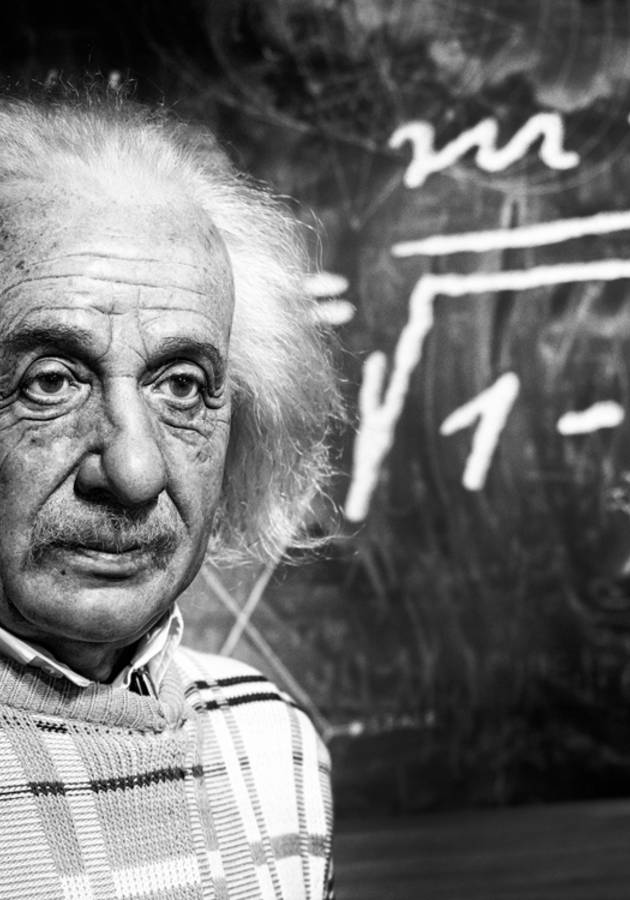The 1979-80 NBA season was historic for three reasons: the inauguration of the three-point line, the debuts of Magic Johnson and Larry Bird, and the demise of the ideal Portland Trail Blazers team. Truth be told, the last one would have probably been forgotten by everybody but a few thousand teary-eyed “blazermaniacs” had it not been vividly documented by Pulitzer Prize-winning journalist David Halberstam in “The Breaks of the Game,” one of the best sports books ever written. In other words, get ready for some NBA history!
The glorious 1976-1977 season
Alongside the Cleveland Cavaliers and the Los Angeles Clippers, the Portland Trail Blazers entered the NBA as a feeble expansion team in 1970. Predictably, the team failed to qualify for the playoffs in its first six seasons, winning just 170 games out of almost 500 during this period. But then, in 1976, the ABA merged with the NBA. As a result, several ABA teams were dissolved and their players were distributed among the remaining NBA teams. In the dispersal draft, with their 14th pick, the Trail Blazers selected Maurice Lucas, a proficient power forward with rebounding prowess and exceptional defending abilities. In his first season with the Blazers, Lucas joined forces with Bill Walton, the team’s coveted number one overall draft pick from 1974, and Jack Ramsay, whom the Blazers hired as their head coach just before the start of the season.
Suddenly, everything seemed in place. As the 1976-1977 season went on, the Blazers evolved from a Cinderella team to a championship contender. After struggling with foot injuries for his first two years in Portland, Walton was now playing at an All-Star level, rapidly developing into the best rebounder and defensive center in the league. He finished the regular season with 18.6 points, 14.4 rebounds and 3.2 blocks per game, leading the league in the last two categories. Lucas also averaged double-double over the season, with 20.2 points and 11.4 boards per game. Supported by forward Lloyd Neal and guards Dave Twardzik and Lionel Hollins, the Blazers’ towering duo led the team to its first ever winning record (49-33) and its first ever playoff appearance. What followed was another first.
After defeating the Chicago Bulls and the Denver Nuggets in the early rounds of the playoff, the Blazers swept the heavily favored Los Angeles Lakers, led by Kareem Abdul-Jabbar, in the Western Conference Finals. Even so, they entered the 1977 NBA Finals as underdogs against Dr. J.’s spectacular Philadelphia 76ers. However, after losing the first two games, the Blazers won four straight to win the NBA championship. In the clinching game, Walton grabbed 20 points, 23 rebounds and 8 blocks, and was subsequently crowned the Finals’ Most Valuable Player. Gene Shue, the then-coach of the 76ers, was left flabbergasted by his performance. “Bill Walton,” he commented after the series, “is the best player for a big man who ever played the game of basketball.” As for the Trail Blazers, well, as one journalist wrote at the time, they seemed like a team that was destined to remain around for quite some time.
The scout and the coach
The 1977 championship battle between the 76ers and the Trail Blazers was billed as a battle between an assembly of amazingly talented “one-on-one” players (Dr. J, George McGinnis, Doug Collins, Joe “Jellybean” Bryant, World B. Free) and a rigid offensive system based on a lot of passing and movement, centered around Walton and Lucas. The system eventually prevailed, marking the beginning of a different kind of basketball. Two men were responsible for the change: Stu Inman, Blazers’ personnel director, and Jack Ramsay, one of the most iconic coaches of the early NBA.
Nowadays (and quite unfairly), Inman is probably best known as the general manager who selected Kentucky center Sam Bowie as the Blazers’ second pick during the 1984 Draft, preferring him to none other than Michael Jordan, who was selected just after by the Chicago Bulls. However, a decade before this faux pas, Inman was pivotal in turning the Blazers from a hopeless crew into a promising franchise, and played a significant role in the building of the 1976-77 championship team. In addition to acquiring Walton, Neal and Hollins through the drafts, he was also the one who selected Lucas and signed Twardzik after the ABA folded.
Thanks to Inman’s scouting abilities and exceptional business deals, Ramsay began the 1976-77 season with more than just a belief: he started it with a sense of purpose. “We can win playing like this,” he told his team after a brilliant 10-minute segment of play at training camp. “I don't mean just having a winning season. I mean win the whole thing.” Best remembered for his plaid suit jackets and blinding, multicolored pants, Ramsay was also one of the first coaches in basketball history to realize that there was no “I” in team. A tortured man, he took defeats so hard that he could often be seen ruminating over them while walking alone through empty streets in strange cities, hours after midnight.
Ramsay’s passion for basketball was such that it sometimes frightened his players. He firmly believed that basketball should be played a certain way, and he was willing to challenge a player to a fistfight in the locker room to prove it.
The seasons in-between
In retrospect, it seems that Ramsay always knew he was a great coach. What he didn’t know – and what he was secretly worried about – was if he would ever get the chance to show his class by training the right group of players. He got precisely that in Walton, Lucas and the 1977 Blazers. They were young, talented, smart, and willing to learn and improve. They were, indeed, the perfect team for Ramsay to implement his vision and execute his unique basketball philosophy.
Fresh off their first NBA championship, the Blazers started the 1977-78 season with 50 wins in their first 60 games. Playing the best basketball in their history, they routed team after team, and many analysts started predicting a dynasty in Portland. “This team deserves any comparison anybody wants to make,” NBA great Rick Barry said after his Golden State suffered a crushing defeat at the hands of Ramsay’s Blazers. “The old Celtics, the Knicks, Philly with Wilt, L.A. with Wilt, anybody. It's a clinic whenever you play them. They get the ball out and ram it down your throat. Walton is a great center who does everything, and all the rest complement each other. The Blazers may be the most ideal team ever put together.”
But then, disaster struck: Walton suffered a broken foot which ended his regular season. He returned for the playoffs only to aggravate his injury. Without him, the Blazers were a different team. They lost their Western Conference Semifinals series to the eventual champions, the Seattle Supersonics, and never recovered from the defeat. Disappointed with his medical treatment in Portland, Walton demanded a trade and sat out the entire following season with an injury after his request was refused. Disappointed with their paychecks when compared to Walton’s, some of his teammates started demanding more money. Powerless, Ramsay could do nothing but watch the demise of his perfect team in the span of a single year. By the time the 1979-80 season started, he was left without half of the team that had won him the NBA title.
Walton, a “what-if” legend
The ideal Blazers team was blown apart by regrets, jealousy and something Halberstam terms “the special burden of success” in the NBA. “Watch out,” Red Auerbach of the Boston Celtics warned Harry Glickman, Portland’s general manager, after the team won the 1977 championship. “Now your troubles begin – they’ll think they’re All-Stars now.” Auerbach was just too experienced and too successful to be wrong on this account. In 1977, the entire Blazers team wanted to win for Ramsay; two years later, they wanted all the victories for themselves. Regardless of whether you are right or not, you can’t build a team on that kind of mentality.
Even though he was named to the NBA's 50th Anniversary Team in 1996, Bill Walton will always be remembered as one of the greatest “what-ifs?” in the history of the game. He had everything: height, movement, low-post offensive skills, shot-blocking abilities, great court vision. Described by Halberstam as “Basketball Jones,” he was also in love with the game, and didn’t need external motivation to play it. Just days after winning the championship in 1977, Walton could be found playing a pickup game against a team led by Phil Jackson on an Indian reservation, refusing to lose at any cost.
It was things such as this that made Walton a born team leader, one of those Bill Russell-type of players who make everyone around them better. In fact, as sports journalist Bill Simmons has noted, the 1977 Blazers were great because they were practically an extension of Walton’s persona – “his mind, his skills, his passing, his rebounding, his unselfishness, his enthusiasm, his everything.” That’s why, when Walton’s foot broke before the end of the 1977-78 season, the Blazers team broke as well. They lost 14 of their remaining 22 games, after losing just 10 of the previous 60.
Things took turn for the worse when a member of the Blazers’ medical staff convinced Walton to try a painkiller injection for the playoffs. This only aggravated his injury, and caused him to doubt the integrity of the entire organization. He asked for a trade and, when this wasn’t granted, he chose to sit out the entire 1978-79 season in protest. Afterward, he became a free agent and signed a lucrative deal with his hometown San Diego Clippers, and in so doing he became the first “million-dollar man” in NBA history. Unfortunately, due to injuries, he spent a large part of his four-year tenure with the Clippers on the sidelines. Just like Ralph Sampson and Yao Ming after him, Walton had absolutely everything to rule the world of basketball for decades – except a durable body and a bit of luck.
Lucas, salaries and racism
After the expansions of the late-1960s and the ABA-NBA merger of 1976, the NBA quickly evolved from a smaller, diverse collection of basketball teams into a major entertainment empire. With the TV rights constantly being renegotiated, in just a matter of years, the salaries of many players went from tens of thousands to hundreds of thousands of dollars per season. With most of the teams struggling to market primarily black athletes to wider audiences, almost all of the players with maximum salaries at the beginning of the 1979-80 season were white.
In fact, it was a common practice at the time for general managers to keep season ticket holders happy by retaining white players on the team, even if just for end-of-the-bench roles. Just for illustration, in 1974, the New Orleans Jazz “traded away the future of the franchise – two first-round draft choices, two seconds, and two roster players – to pry [Pete] Maravich away from Atlanta” just because he was “white, a local hero, and so flashy a player.” Besides, during their championship run with the Trail Blazers, Walton was earning four times as much money as the second-best player on the team, Maurice Lucas.
Lucas was, of course, unhappy with this circumstance. Nicknamed “The Enforcer” for a reason, he had grown up in the worst part of Pittsburgh, and wasn’t planning to get tricked out of his rightfully deserved money. He was, after all, a 20/10 player on a championship team and couldn’t think of a reason to get past the fact that Walton was earning that much more money than him, even while only sitting on the bench, injured. It didn’t matter that the two seemed perfect together – what mattered was the injustice of it all.
When trade rumors became prevalent, after just 27 games of the 1979-80 season, Ramsay decided he had had enough with Lucas, so he traded both him and Lionel Hollins – who was also disgruntled by his salary – to the Nets and the 76ers, respectively. Both players got hefty paychecks as a result of the trades, but they lost the chance to compete for the title. Neither would play for another great team until the end of their careers.
The grim 1979-80 season
The Blazers selected Minnesota standout center Mychal Thompson with their first overall draft pick in the 1978 NBA draft. Led by Thompson, Lucas, Hollins and newly acquired guard Billy Ray Bates, the team ended the season with a winning 45-37 record, barely squeezing into the playoffs, where they lost in the first round to the Phoenix Suns. They entered the following season with even fewer expectations, since they knew from the outset Thomas would miss the entire year due to injury. With Walton, Lucas and Hollins gone from the team’s glory days, Ramsay was now coaching an entirely different team. Kevin Kunnert, Randy Smith and Kermit Washington were some of its newest members: Portland got them from the Clippers in exchange for Walton.
Even back then, Washington – a great rebounder and a good team player – was known for only one thing: throwing a vicious roundhouse punch that nearly killed future Hall of Famer Rudy Tomjanovich during an on-court fight in 1977. In 1980, he came to Portland looking for peace, rather than a championship ring or personal glory. He proved a decent player, averaging 13.4 and 10.5 for the season and earning an All-Star nod, but could never shake off his unfitting reputation.
It didn’t matter that he was, in reality, a soft-spoken man who had willed himself into becoming a basketball player after spending many years in poverty, being “passed around a lot” by everybody as a little boy. It mattered even less that, after a losing streak, he would go to the library to read a biography of Gandhi, in search for some solace and comfort in the life of that great man. That single 1977 punch trailed Washington everywhere he went in Portland and any other American city, and regretfully remains the defining moment of his respectable basketball career to this very day.
In January 1980, the Blazers lost newcomer Kunnert for the remainder of the season. To fill the roster, they signed a 10-day contract with promising (but waived) rookie Billy Ray Bates, the eighth of nine children of Mississippi sharecroppers. Bates could barely read or stay in school, but he had a raw talent and a lot of confidence. Thanks to his energetic play and backboard-shattering slam dunks, the freelancing guard quickly became a fan favorite and was re-signed by the franchise, giving some life to their dying 1980 season – all the while playing that exact one-on-one basketball his coach Ramsay despised and had hoped to oust.
In other words, the perfect Blazers team was now a vague and distant memory in the minds of many, leaving in its place yet another group of talented NBA individuals. They did manage to get to the playoffs – albeit with a losing 38-44 record – but then they lost two games to one to the Seattle Supersonics in the opening round. The 1977 Blazers had all the makings of becoming one of the greatest NBA dynasties. Just three years later, they were already thought of as “The Great Team That Could Have Been.” They are still remembered that way.
Final notes
After David Halberstam’s untimely death in 2007, noted sports journalist Bill Simmons described “The Breaks of the Game” as “the perfect book about the perfect team.”
Soon after, Jeff Baker of The Oregonian went a step further calling Halberstam’s work “the best book ever written about basketball, maybe the best book ever written about sports in America, and surely the best book ever written about the Trail Blazers.”
Few would argue with most of these superlatives. We would not.
12min tip
Michael Jordan is reported to have once said that talent can merely win games, and that only teamwork and intelligence can win championships. The story of the Portland Trail Blazers of the late 1970s is a great proof for both.





























